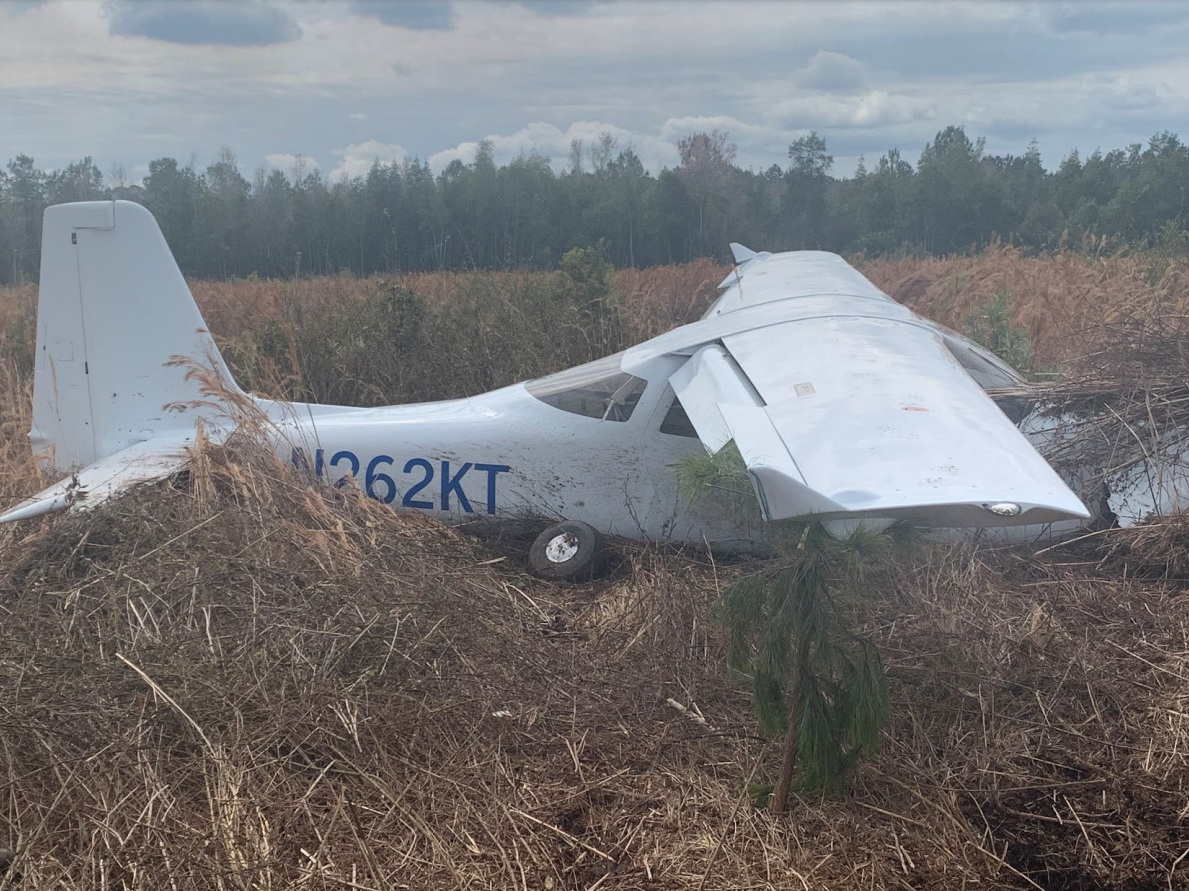
ASN Wikibase Occurrence # 368658
This information is added by users of ASN. Neither ASN nor the Flight Safety Foundation are responsible for the completeness or correctness of this information.
If you feel this information is incomplete or incorrect, you can submit corrected information.
| Date: | Sunday 13 March 2022 |
| Time: | 15:00 |
| Type: | Aircraft Designs Stallion |
| Owner/operator: | Private |
| Registration: | N262KT |
| MSN: | 036 |
| Fatalities: | Fatalities: 0 / Occupants: 1 |
| Aircraft damage: | Substantial |
| Category: | Accident |
| Location: | near Ridgeland-Claude Dean Airport (3J1), Ridgeland, SC -
 United States of America United States of America
|
| Phase: | Initial climb |
| Nature: | Test |
| Departure airport: | Ridgeland-Claude Dean Airport, SC (3J1) |
| Ridgeland-Claude Dean Airport, SC (3J1) | |
| Investigating agency: | NTSB |
| Confidence Rating: |
On March 13, 2022, at 1500 eastern daylight time, an experimental, amateur-built Aircraft Designs Inc. Stallion airplane, N262KT, was substantially damaged when it was involved in an accident in Ridgeland, South Carolina. The pilot was not injured. The airplane was operated as a Title 14 Code of Federal Regulations Part 91 flight test flight.
The pilot observed a high voltage warning during the experimental amateur-built airplane’s takeoff roll on the 5th flight during phase 1 testing. The pilot continued the takeoff and the airplane climbed normally to an altitude of 50 ft. When the pilot raised the landing gear, the engine immediately lost all power. He performed a forced landing straight ahead to a field, during which the fuselage sustained substantial damage.
A postaccident examination of the airplane by the pilot revealed that the primary alternator circuit breaker was open.
The airplane was equipped with two electrical busses, an airframe bus and an isolated engine bus. The airframe bus included a 60-amp primary alternator, a 20-amp secondary alternator, and an electro-hydraulic power pack that provided hydraulic pressure to operate the landing gear. The power pack’s electric motor required an estimated 40-42 amps for startup. Given the high voltage warning and open primary alternator circuit breaker, it is likely that the primary alternator went offline at some time during the takeoff before the pilot attempted to raise the landing gear. As he moved the landing gear lever, the hydraulic pump startup demand likely exceeded the capacity of the airframe electrical bus while operating with only the 20-amp secondary alternator.
The airframe electrical bus provided power to the engine electrical bus. The engine electrical bus powered the engine’s electronic fuel injection and ignition system, which required an estimated 24 amps to operate. The high demand on the airframe bus due to the landing gear operation while the bus was operating off of the secondary alternator likely reduced or interrupted its ability to provide power to the engine electrical bus. The engine bus was equipped with a backup battery intended to provide power to the fuel injection and ignition systems in the event of a loss of electrical power from the airframe bus. The battery remained intact and able to energize the engine bus after the accident; however, neither of the electric fuel pumps would rotate. Although the fuel pumps were not examined and may have been damaged during the accident, given the loss of electrical power followed by loss of engine power, it is more likely that the backup battery system was unable to sustain the required load of the fuel injection/ignition system.
The cause of the initial overvoltage and the alternator circuit breaker opening was not determined. The pilot suggested that an alternator overspeed due to an improper pully diameter, or loss of an electrical ground connection, could have resulted in an overvoltage.
Probable Cause: A loss of sufficient electrical power to the engine’s electronic fuel injection/ignition system for undetermined reasons, which resulted in a total loss of engine power.
Accident investigation:
 |
|
Sources:
NTSB
https://data.ntsb.gov/Docket?ProjectID=104782
Location
Images:

Photo: NTSB
Revision history:
| Date/time | Contributor | Updates |
|---|---|---|
| 23-Mar-2024 22:57 | Captain Adam | Added |
| 23-Mar-2024 22:57 | Captain Adam | Updated [Country] |
Corrections or additions? ... Edit this accident description
The Aviation Safety Network is an exclusive service provided by:


 ©2024 Flight Safety Foundation
©2024 Flight Safety Foundation